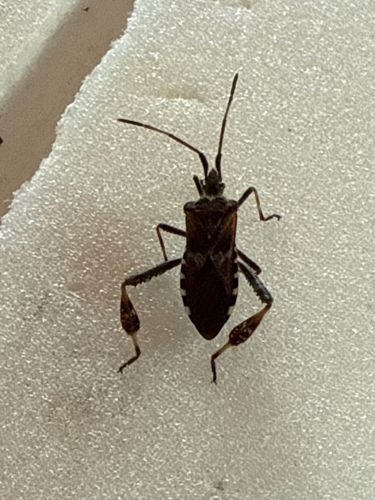Western Conifer Seed Bug
Scientific Name: Leptoglossus occidentalis
Order & Family: Hemiptera, Coreidae
Size: 16-20 mm (0.63-0.79 inches) in length

Natural Habitat
Coniferous forests, often found on pines, Douglas-firs, and hemlocks. In autumn, they may seek shelter in homes or other structures.
Diet & Feeding
Primarily feeds on the developing seeds and cones of coniferous trees, using its piercing-sucking mouthparts. It may also feed on sap from needles and stems.
Behavior Patterns
Adults are active during warmer months, feeding and reproducing. Females lay eggs on conifer needles. In late summer and fall, they aggregate and seek overwintering sites, often entering homes or other buildings through cracks and crevices. They are known to emit a pungent odor when disturbed, which is why they are sometimes mistaken for 'stink bugs'.
Risks & Benefits
Potential Risks: Primarily a nuisance pest when they enter homes in large numbers to overwinter. They do not sting, bite, or cause structural damage. While they can damage conifer seeds, they generally do not cause significant harm to mature trees. Potential Benefits: No direct human benefits; their ecological role involves seed predation in conifer forests.
Identified on: 10/12/2025